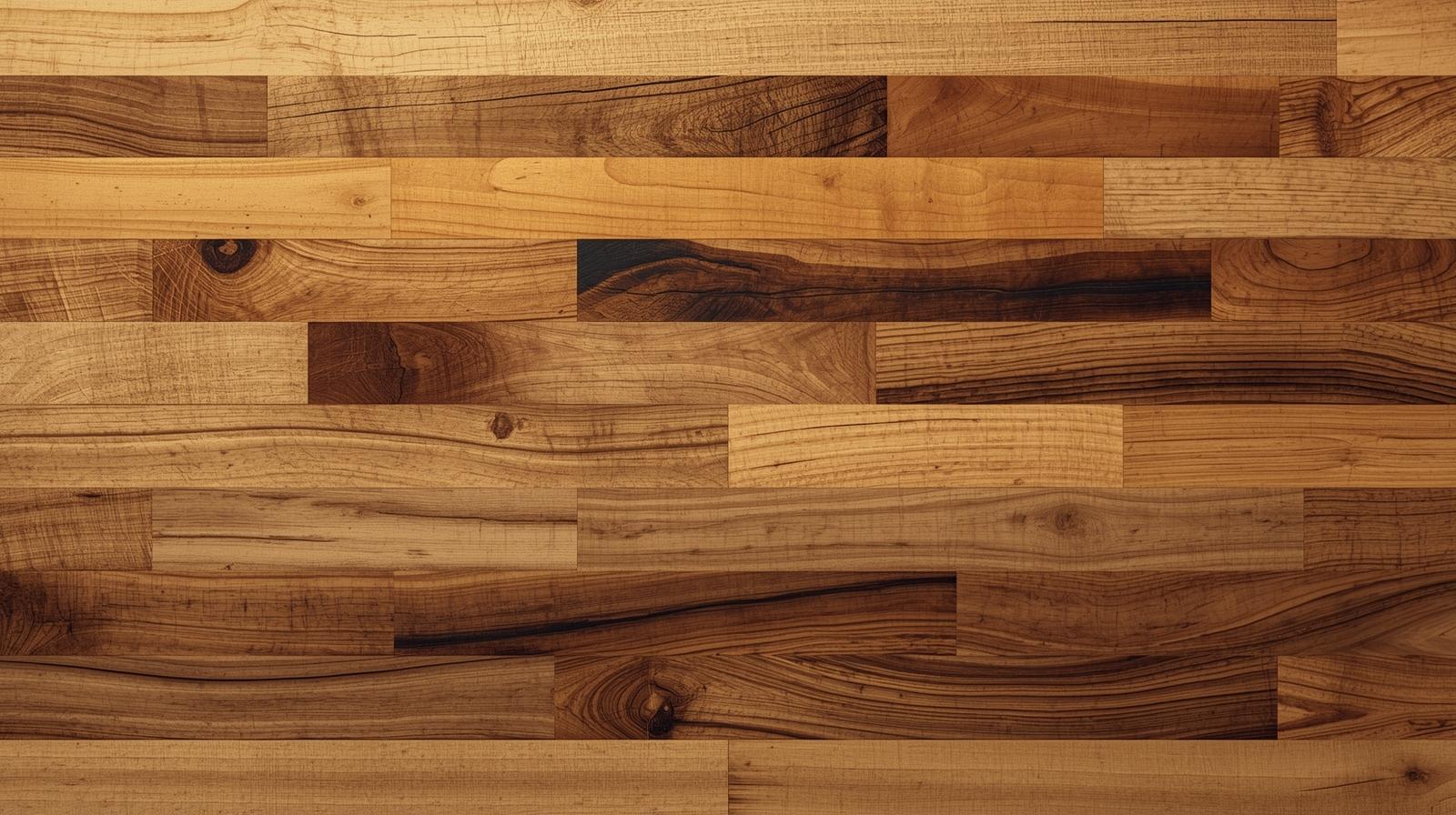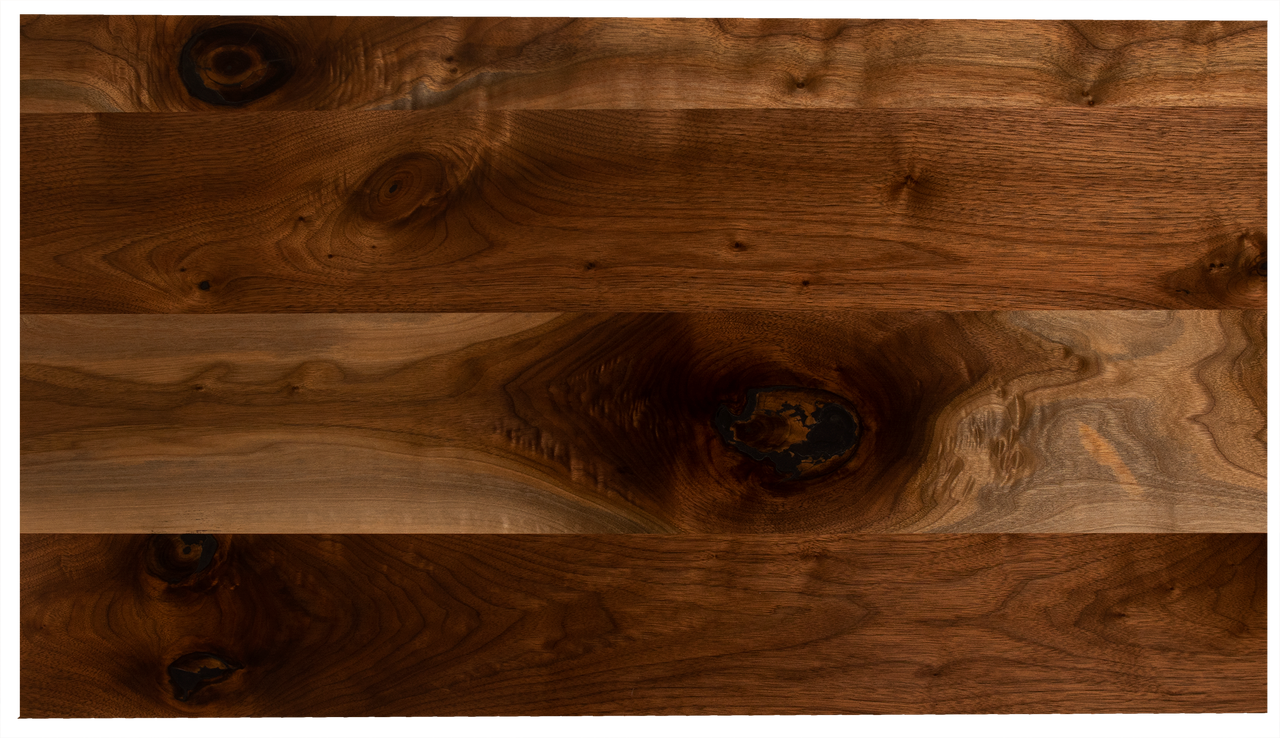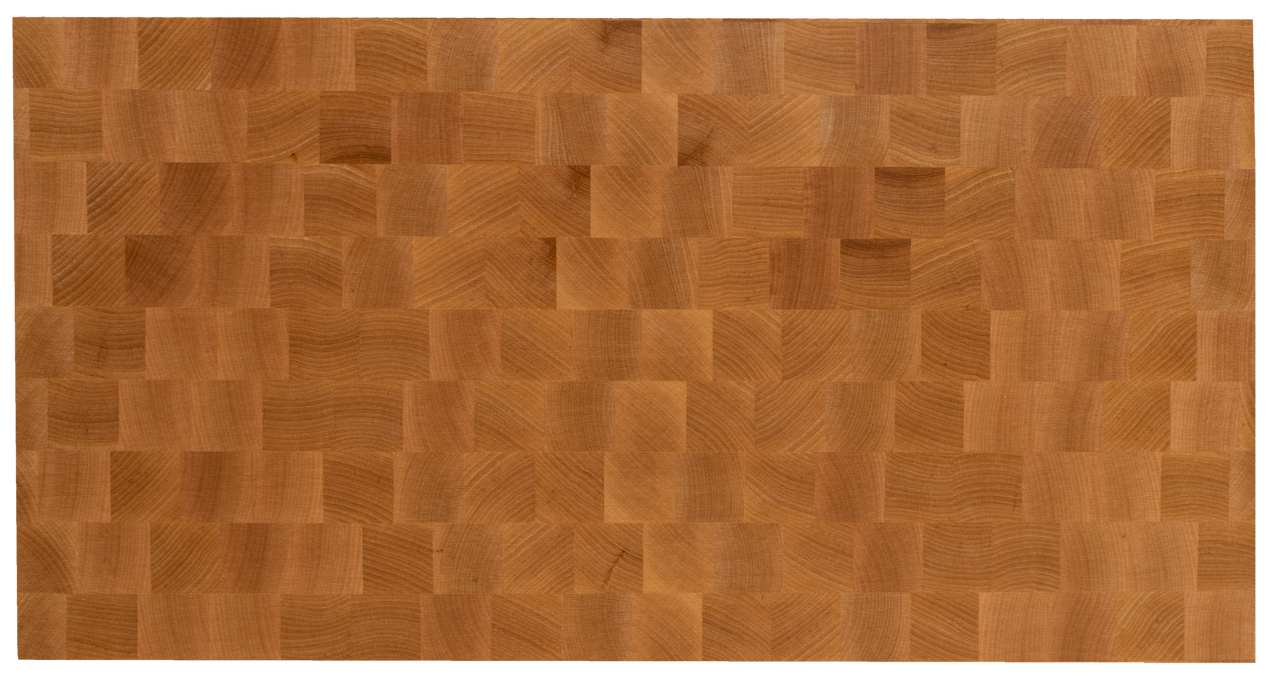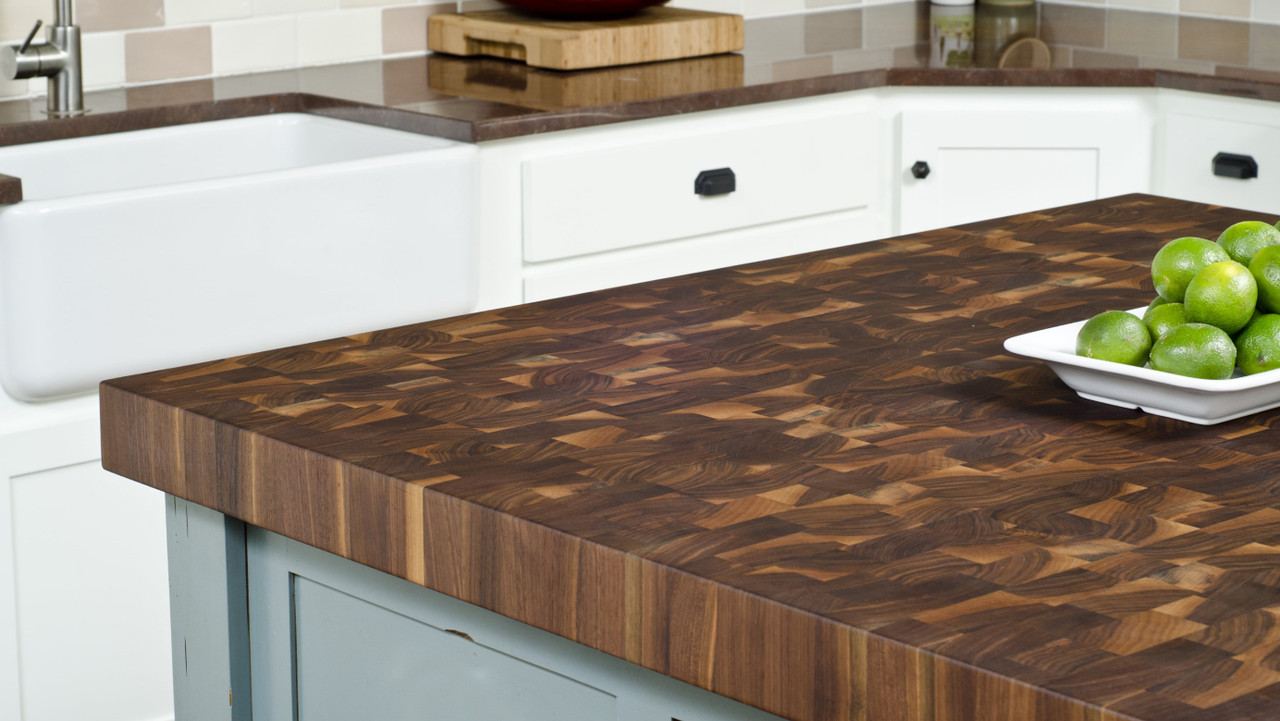Butcher Block Countertops: The Complete Technical Guide for Kitchens That Work

Butcher block countertops in a modern kitchen design
Butcher block countertops are made from strips of hardwood such as maple, oak, or walnut, glued together to form a solid, durable work surface. They're cost-effective, easy to customize, and compatible with most kitchen styles. When properly sealed and maintained, they resist wear and last 15–25 years, making them a reliable option for residential kitchen applications.
Before you decide if a butcher block countertop is right for your space, here's what you need to know. In the following sections, you'll learn how to select, install, and maintain butcher block countertops for the best results.
What Is a Butcher Block Countertop?
A butcher block countertop is made from strips of solid wood, usually hardwoods like maple, walnut, or oak that are bonded together to form a thick, stable surface. Originally developed for butchers who needed strong, stable worktops to cut meat, today's butcher blocks are just as suitable for meal prep as they are for aesthetic appeal.
While wood countertops can be made from full slabs or panels, butcher block refers specifically to this multi-strip construction method. Skilled woodworkers play a crucial role in crafting butcher block countertops, bringing expertise and attention to detail to every piece. The result is a counter that's durable, flexible in design, and full of natural character.
There is a wide selection of butcher block countertops available, offering different styles and finishes to suit any preference.
Types of Butcher Block Grain: Edge, Face, and End
The inherent resilience and mechanical performance of a butcher block slab are dictated by the orientation of the wood fibers.
1. Edge Grain

edge grain butcher block countertop
This is the most common and cost-effective butcher block style. Strips of wood (staves) are turned on their sides (edges), creating long, uniform lines. It's stable, durable, and less prone to warping, perfect for kitchens that get heavy use. Edge grain delivers a clean, visually linear "bowling alley" aesthetic and typically costs less than the other styles. Standard sizes can be quite large, with maximum dimensions often reaching 48 inches by 120 inches.
2. Face Grain

rustic wallnut face grain butcher block countertop
In face grain construction, lumber boards are laid flat and joined at the edge. This method yields the widest, most visually expressive grain patterns, often mimicking traditional slab tables. Here, the wider face of the board is exposed. You'll see more of the wood's natural beauty, including its full grain patterns. Face grain is often used in furniture because it's visually rich, but it's less durable than edge or end grain. Think of it more for decorative countertops or light prep zones.
3. End Grain

birch end grain butcher block countertop
End grain is the ultimate premium butcher block option. Tiny squares of wood are arranged with their ends facing up, creating a checkerboard effect. Not only is this visually stunning, it's the most forgiving surface for knives and shows the least wear. This method offers significantly superior resilience because the knife edge tends to glide between the fibers rather than slicing across them, a quality often described as "self-healing". It's also the most expensive due to the labor-intensive process.
End grain matching is an important detail in high-quality butcher block construction. It refers to how the orientation and pattern of each wood block is carefully arranged during assembly to create a consistent, balanced appearance across the surface. This involves aligning grain direction, color tone, and block size to maintain uniformity and avoid visual disruptions in the checkerboard pattern.
Precise matching also supports structural stability by distributing wood movement more evenly across the surface. In poorly matched end grain tops, misaligned blocks can expand or contract differently, leading to uneven surfaces or visible gaps over time. When properly executed, end grain matching not only enhances the overall look but also contributes to the long-term performance and dimensional integrity of the countertop.
Table 1: Butcher Block Construction Comparison
| Grain Type | Aesthetic | Durability/Resilience | Primary Application | Maximum Size (Typical) |
|---|---|---|---|---|
| Edge Grain | Linear "Staves" | High; Stable, Good for general use | General Countertop, Islands | Up to 48" x 120" |
| End Grain | Checkerboard/Block Pattern | Highest; "Self-Healing" for cutting | Dedicated Chopping Blocks, Islands | Up to 48" x 48" |
| Face Grain | Wide Board Look | Lowest; Shows knife marks easily | Serving/Display, Desks | Dependent on slab width |
Best Wood Species for Butcher Block Countertops
The species of wood you choose is just as important as the construction style. Here are the top options and what they bring to the table (literally):
Table 2: Different Wood Species for Butcher Block Countertops Comparison
| Wood Species | Color/Appearance | Durability | Price |
|---|---|---|---|
| Maple | Pale cream, subtle grain | Very hard and stable | Moderate |
| Walnut | Rich brown with purple hues | Durable but softer than maple | High |
| Oak | Warm golden tone, visible grain | Strong and slightly porous | Affordable |
| Cherry | Reddish tone that deepens over time | Medium hardness | Premium |
| Acacia | Varied shades, exotic grain | Hard and water-resistant | Moderate |
| Bamboo | Light and eco-friendly | Very stable | Budget-friendly |
When selecting wood, consider not just aesthetics but how the material will wear over time, what kind of maintenance it requires, and how it will complement your cabinetry and flooring. For a rustic charm, dark-modern kitchen, walnut is stunning. For a coastal or Scandinavian vibe, pale maple or bamboo may be your best bet.
Lead times for custom butcher block countertops can vary depending on the materials and level of craftsmanship involved, but standard sizes are typically available for immediate delivery.
Butcher Block vs Other Countertop Materials
How does butcher block stack up against stone, concrete, or laminate? Here's a quick comparison:
| Material | Warmth | Maintenance | Durability | Cost (per sq. ft.) |
|---|---|---|---|---|
| Butcher Block | ✅ Natural warmth | Regular oiling/sealing | Moderate to High | $25 - $100 |
| Granite | ❌ Cool to touch | Minimal | Very High | $40 - $200 |
| Quartz | ❌ Engineered, cold | Minimal | Very High | $50 - $150 |
| Concrete | ❌ Industrial feel | Seal regularly | Moderate | $60 - $120 |
| Laminate | ❌ Synthetic | Easy | Low | $10 - $40 |
Butcher block wins on style, eco-friendliness, and tactile warmth, but it does demand a little more attention. For design-forward clients who value personality and customization, butcher block is an unbeatable option.
When choosing your wood, consider how the color, tone, and grain will complement your cabinetry and flooring.
Why Designers Love Butcher Block

end grain butcher block countertop in a modern kitchen
Butcher block works well in many design contexts. It adds warmth, texture, and a tactile element to kitchens dominated by hard surfaces like metal, glass, or quartz.
- In modern kitchens, edge-grain maple or walnut can soften sleek cabinets.
- In farmhouse and rustic spaces, oak or acacia offers traditional character.
- For kitchen islands, a butcher block top brings visual contrast and a central prep space.
It's also a sustainable material since wood is a renewable natural resource, and many suppliers offer FSC-certified options. For designers conscious of sustainability, that's a big plus.
How to Install Butcher Block Countertops
Installing a butcher block countertop is straightforward, but there are a few technical points to keep in mind. The underside of the countertop is typically left unfinished because it is not visible once installed:
- Allow for expansion: Wood expands and contracts with humidity. Leave a small gap between the wall and counter for movement.
- Support properly: Because butcher block is heavy, make sure your cabinets and island are structurally strong.
- Cutouts for sinks or appliances should be sealed thoroughly to protect against moisture damage.
- Seal before use: An unfinished top must be sealed or oiled before exposure to moisture.
Standard sizes range from 1.5" to 2.25" in thickness, with widths typically around 25". Length is a key measurement when selecting a countertop, and lengths vary from 6 to 12 feet. Custom orders may take 4–6 weeks to ship, depending on the wood and finish. Custom countertops can be ordered to fit specific kitchen layouts and preferences.
How to Seal Butcher Block Countertops
Sealing is essential to keep your butcher block protected from moisture, stains, and bacteria. Before sealing, make sure the surface is thoroughly sanded to achieve a smooth, damage-resistant finish. This step helps maintain the natural appearance of the wood and ensures the sealant adheres properly.
For a food-safe finish, you can use:
- Mineral oil: The classic choice. Easy to apply and safe for food prep areas.
- Tung oil: A natural, hard-drying oil that penetrates deeper.
- Beeswax blends: Great for maintenance and adding a slight sheen.
Sealing process:
- Clean the surface thoroughly.
- Sand lightly if needed.
- Apply oil using a cloth, going with the grain.
- Let it soak in for 6–8 hours.
- Wipe off excess and reapply if needed.
Reapply oil every 4–6 weeks to maintain protection, especially in high-use zones like around sinks or cooktops.
Pro Tip:
Want a richer finish with more water resistance? Try using a mix of mineral oil and beeswax. This combo conditions the wood and creates a natural seal on top. For those looking to avoid petroleum-based products, walnut oil is an excellent natural alternative (but avoid it if anyone in the home has nut allergies).
Sealing is your first line of defense against drying, cracking, and water damage. It also enhances the natural grain, giving your butcher block that deep, honey-toned glow that makes people fall in love with it.
Daily Care and Long-Term Maintenance
Wood counters are surprisingly low-maintenance once sealed. Here's how to keep them looking their best:
- Clean with mild soap and water. Avoid harsh cleaners or abrasives.
- Wipe up spills quickly, especially water or acidic foods like lemon juice or vinegar.
- Never put hot pots directly on the wood, always use a trivet.
- Avoid cutting directly on the countertop. Use cutting boards to prevent scratches.
If the surface becomes worn or stained, you can sand and re-oil it to restore its original appearance.
How Durable Are Butcher Block Countertops?
Durability depends on wood species, grain type, and how it's maintained. With proper care, a butcher block kitchen countertop can last 15–25 years or more. Edge and end-grain counters hold up better than face grain, and woods like maple and walnut tend to resist wear better than softer species.
You may see scratches, minor dents, and a patina develop over time, but for many, that's part of the charm. Butcher block doesn't aim for flawless perfection; it embraces natural wear as part of its appeal.
Choosing a butcher block countertop is an investment in your kitchen, providing long-term value and durability when properly constructed and finished.
What's the Downside of Using Butcher Block?
While there are plenty of benefits, it's worth knowing the trade-offs:
- Not heatproof: You can't rest hot cookware directly on the surface.
- Susceptible to water damage if not properly sealed and maintained.
- Requires regular oiling, especially in high-use or humid areas.
- Easily scratched or dented, though it's also easy to sand and fix.
Butcher block isn't perfect, but no material is. The key is knowing the downsides and planning around them. If you're a designer, architect, or homeowner who values tactile warmth, custom looks, and natural materials, butcher block could still be your perfect match, as long as you treat it right.
What Is the Rule of 7 for Butcher Block?
This term refers to the drying process of the wood before construction. For every inch of thickness, wood should be air-dried for 7 days. So a 2-inch-thick slab requires at least 14 days of drying time.
Why does this matter?
- It ensures stable construction and reduces warping later.
- It helps maintain the structural integrity over decades.
- It supports a smoother finish and better oil absorption.
When buying butcher block, always ask if the wood was properly seasoned and dried using the rule of 7. It's a sign of quality craftsmanship.
Is Butcher Block Worth It?
In short: yes, for the right homeowner or project.
Butcher block countertops are simple, honest, and effective. When the right wood is chosen and the surface is properly sealed, they hold up well to daily use. They're not the lowest maintenance option, and they don't belong in every space, but they offer warmth, repairability, and a natural look that many homeowners and designers prefer over colder materials. If you're looking for a surface that wears in rather than wears out, butcher block is a smart, straightforward choice.
Butcher Block Countertops Near Me in New York City
If you're renovating in NYC and want the warmth and durability of a butcher block countertop, CooperBuild can help. We specialize in custom kitchen and bath renovations, and butcher block is one of the materials we work with regularly for residential projects.
We guide you through selecting the right wood species and grain type, handle precision installation, and deliver a finished space that's both functional and refined. Visit our Kitchen & Bath Renovation Services to learn more or get started.
Frequently Asked Questions
About CooperBuild Team
CooperBuild's team brings expertise in luxury kitchen renovations and premium countertop materials for discerning NYC homeowners.
Kitchen & Bath Specialists
Subscribe to Our Newsletter
Get the latest insights, trends, and news from the construction industry delivered straight to your inbox.
We respect your privacy. Unsubscribe at any time.

